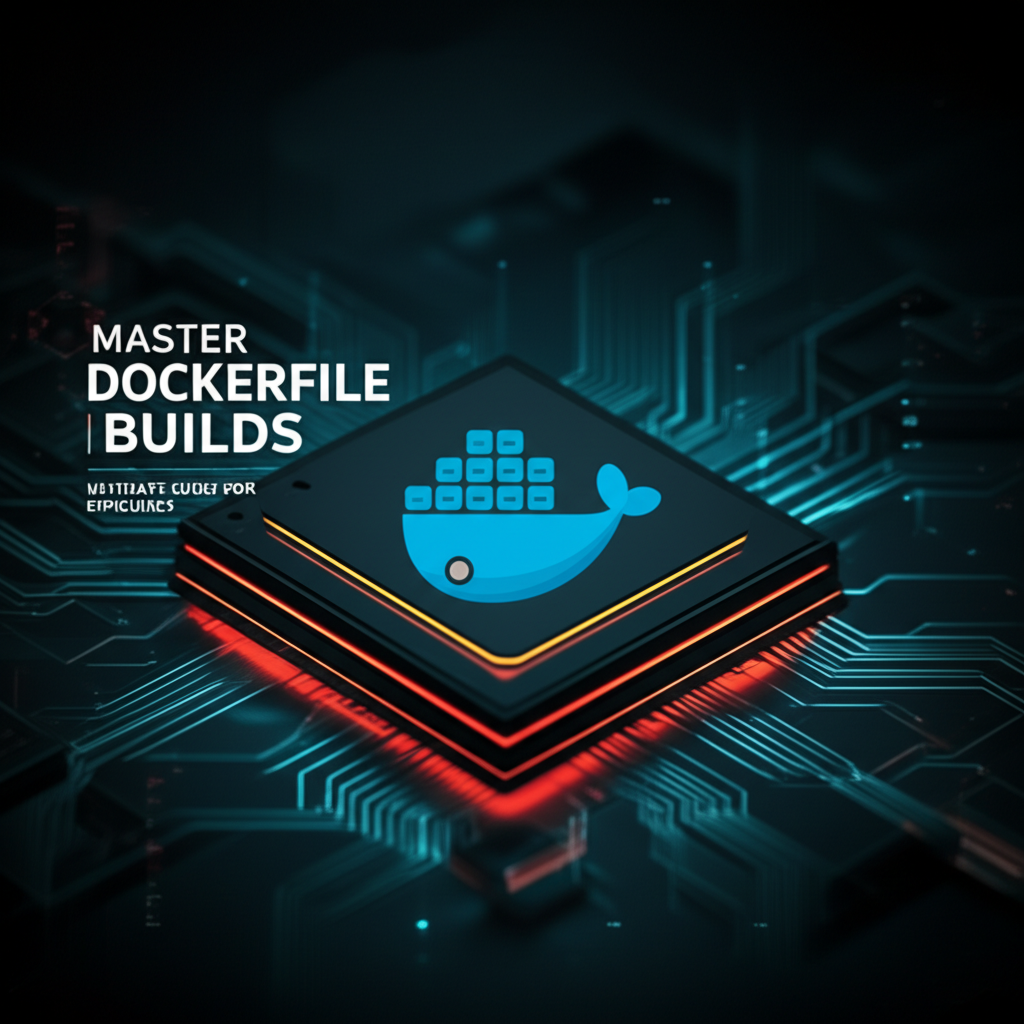Master Dockerfile Builds: Ultimate Guide for Efficiency

In the rapidly evolving world of software development, Docker has emerged as a game-changer for containerization and orchestration. One of the most critical components in Docker is the Dockerfile, which serves as the blueprint for creating Docker images. This guide aims to provide you with an in-depth understanding of Dockerfile builds, focusing on efficiency and best practices. By the end of this article, you'll be equipped with the knowledge to optimize your Dockerfile builds and enhance your overall development workflow.
Understanding Dockerfile
Before diving into Dockerfile builds, it's essential to understand what a Dockerfile is and its role in the Docker ecosystem. A Dockerfile is a text file containing instructions for creating a Docker image. It specifies the base image, environment variables, installed packages, exposed ports, and other configurations needed to create a containerized application.
Key Components of a Dockerfile
- Base Image: The starting point for your Docker image. It could be a minimal image like
alpineor a full-fledged OS image likeubuntu. - Instructions: Commands that define the steps to build the image, such as
RUN,CMD,EXPOSE, andENTRYPOINT. - Environment Variables: Variables that can be set for the container during runtime.
- Volumes: Persistent storage that can be mounted into a container.
- Networks: Configurations for networking within the container.
Optimizing Dockerfile Builds
Efficiency in Dockerfile builds is crucial for faster deployment and reduced resource consumption. Here are some best practices to optimize your Dockerfile builds:
1. Use Lightweight Base Images
Choose a lightweight base image that matches your application's requirements. For example, alpine is a minimal Docker image based on Alpine Linux, which is much smaller than traditional Linux distributions like Ubuntu.
| Base Image | Size (MB) |
|---|---|
| alpine | 5 |
| ubuntu | 250 |
2. Combine Steps
Combine multiple commands into a single RUN instruction to reduce the number of layers and speed up the build process.
RUN apt-get update && \
apt-get install -y nginx && \
rm -rf /var/lib/apt/lists/*
3. Clean Up
Remove unnecessary files and packages from the image to reduce its size. This can be achieved using the RUN instruction to clean up after installations.
RUN apt-get update && \
apt-get install -y nginx && \
apt-get clean && \
rm -rf /var/lib/apt/lists/*
4. Multi-Stage Builds
Use multi-stage builds to separate the build-time dependencies from the runtime dependencies. This helps in reducing the size of the final image.
# Build stage
FROM python:3.8-slim as builder
WORKDIR /app
COPY requirements.txt .
RUN pip install --no-cache-dir -r requirements.txt
# Runtime stage
FROM python:3.8-slim
WORKDIR /app
COPY --from=builder /app .
CMD ["python", "app.py"]
5. Cache Optimization
Optimize caching by using RUN commands that change the context of the image, such as copying new files, to ensure that the cache is invalidated when necessary.
RUN echo 'Hello' > file.txt && \
echo 'World' >> file.txt
APIPark is a high-performance AI gateway that allows you to securely access the most comprehensive LLM APIs globally on the APIPark platform, including OpenAI, Anthropic, Mistral, Llama2, Google Gemini, and more.Try APIPark now! 👇👇👇
APIPark and Dockerfile Efficiency
APIPark, an open-source AI gateway and API management platform, can be integrated into your Docker workflow to enhance efficiency. By using APIPark, you can automate the deployment and management of your APIs, ensuring that your Docker containers are always up-to-date with the latest API versions.
How APIPark Helps in Dockerfile Efficiency
- Automated API Deployment: APIPark allows you to deploy APIs directly from your Docker containers, ensuring that your applications always use the latest API versions.
- API Versioning: APIPark supports API versioning, which helps in managing different versions of your APIs within the same Docker container.
- API Monitoring: APIPark provides real-time monitoring of your APIs, ensuring that your Docker containers are always performing optimally.
Conclusion
Optimizing Dockerfile builds is crucial for efficient development and deployment of containerized applications. By following the best practices outlined in this guide, you can create lightweight, secure, and efficient Docker images. Additionally, integrating APIPark into your Docker workflow can further enhance efficiency by automating API deployment and management.
Frequently Asked Questions (FAQ)
1. What is a Dockerfile? A Dockerfile is a text file that contains instructions for building a Docker image. It specifies the base image, environment variables, installed packages, exposed ports, and other configurations needed to create a containerized application.
2. How do I choose a base image for my Dockerfile? Choose a base image that matches your application's requirements. If you're looking for a lightweight image, consider using alpine or scratch. For a full-fledged OS image, you can use ubuntu or debian.
3. What are the benefits of using multi-stage builds in Dockerfile? Multi-stage builds allow you to separate build-time dependencies from runtime dependencies, resulting in smaller, more optimized Docker images.
4. How can I optimize caching in my Dockerfile? Optimize caching by using RUN commands that change the context of the image, such as copying new files, to ensure that the cache is invalidated when necessary.
5. What is the role of APIPark in Dockerfile efficiency? APIPark can be integrated into your Docker workflow to automate API deployment and management, ensuring that your Docker containers are always up-to-date with the latest API versions and performing optimally.
🚀You can securely and efficiently call the OpenAI API on APIPark in just two steps:
Step 1: Deploy the APIPark AI gateway in 5 minutes.
APIPark is developed based on Golang, offering strong product performance and low development and maintenance costs. You can deploy APIPark with a single command line.
curl -sSO https://download.apipark.com/install/quick-start.sh; bash quick-start.sh

In my experience, you can see the successful deployment interface within 5 to 10 minutes. Then, you can log in to APIPark using your account.

Step 2: Call the OpenAI API.



